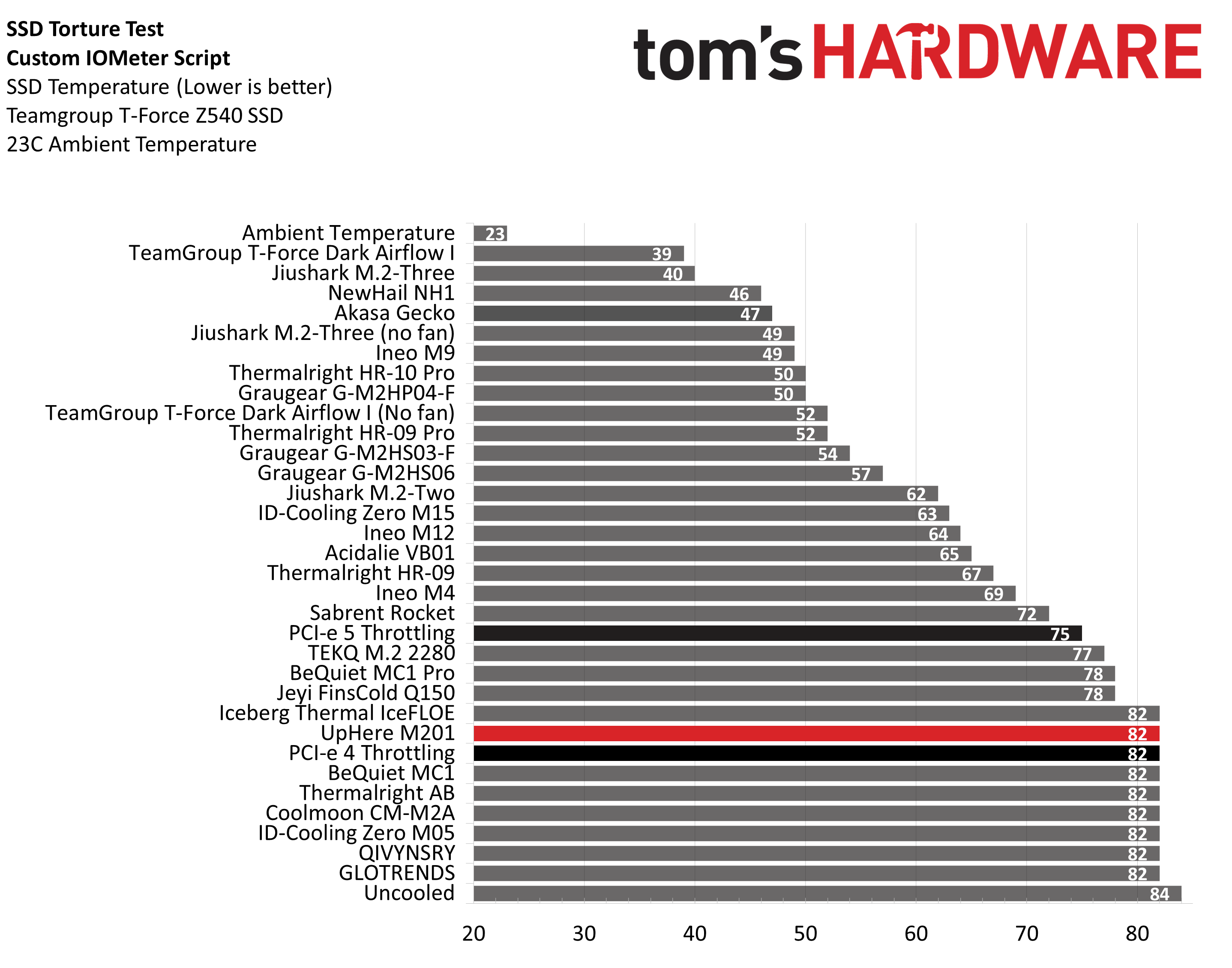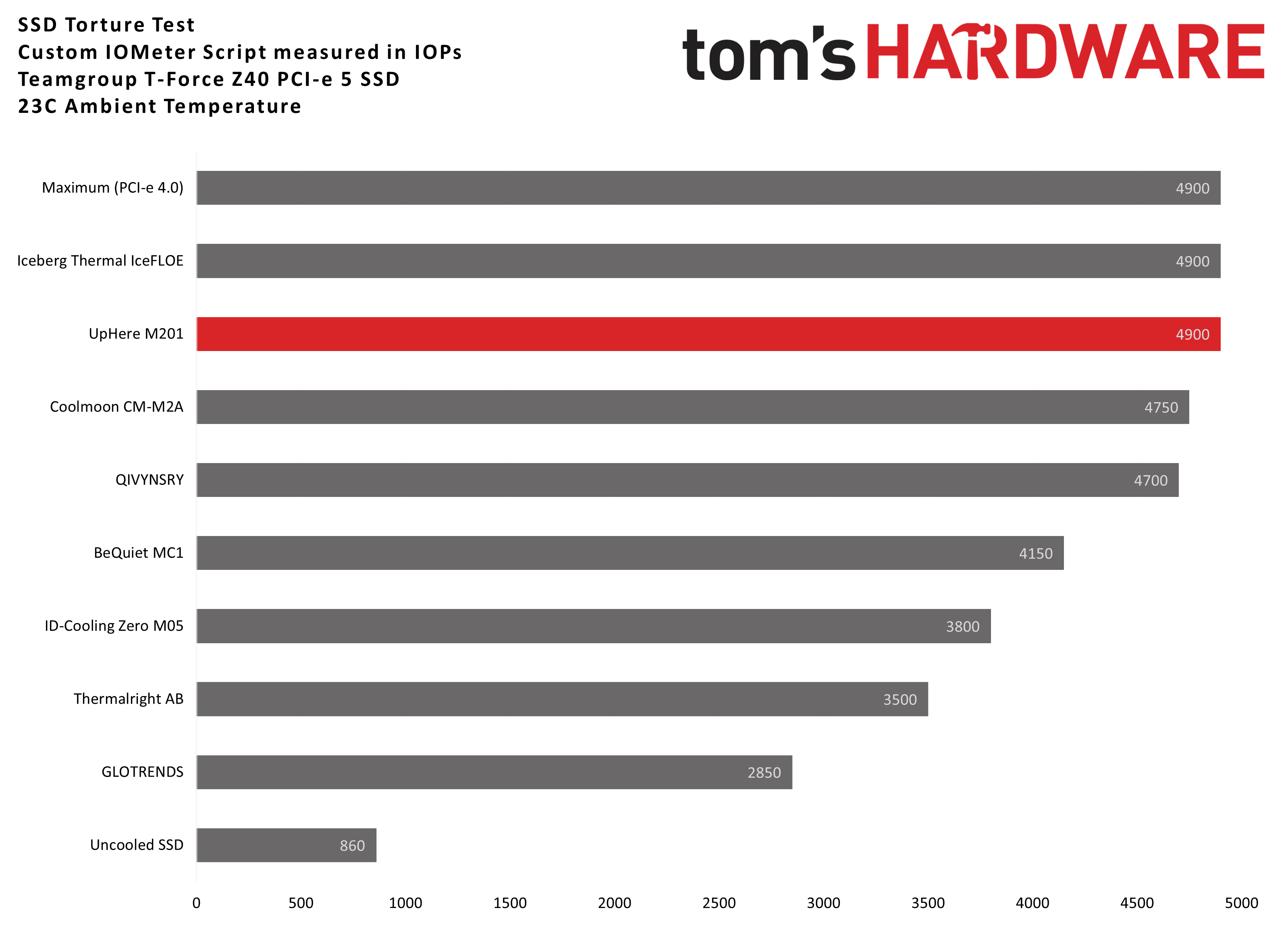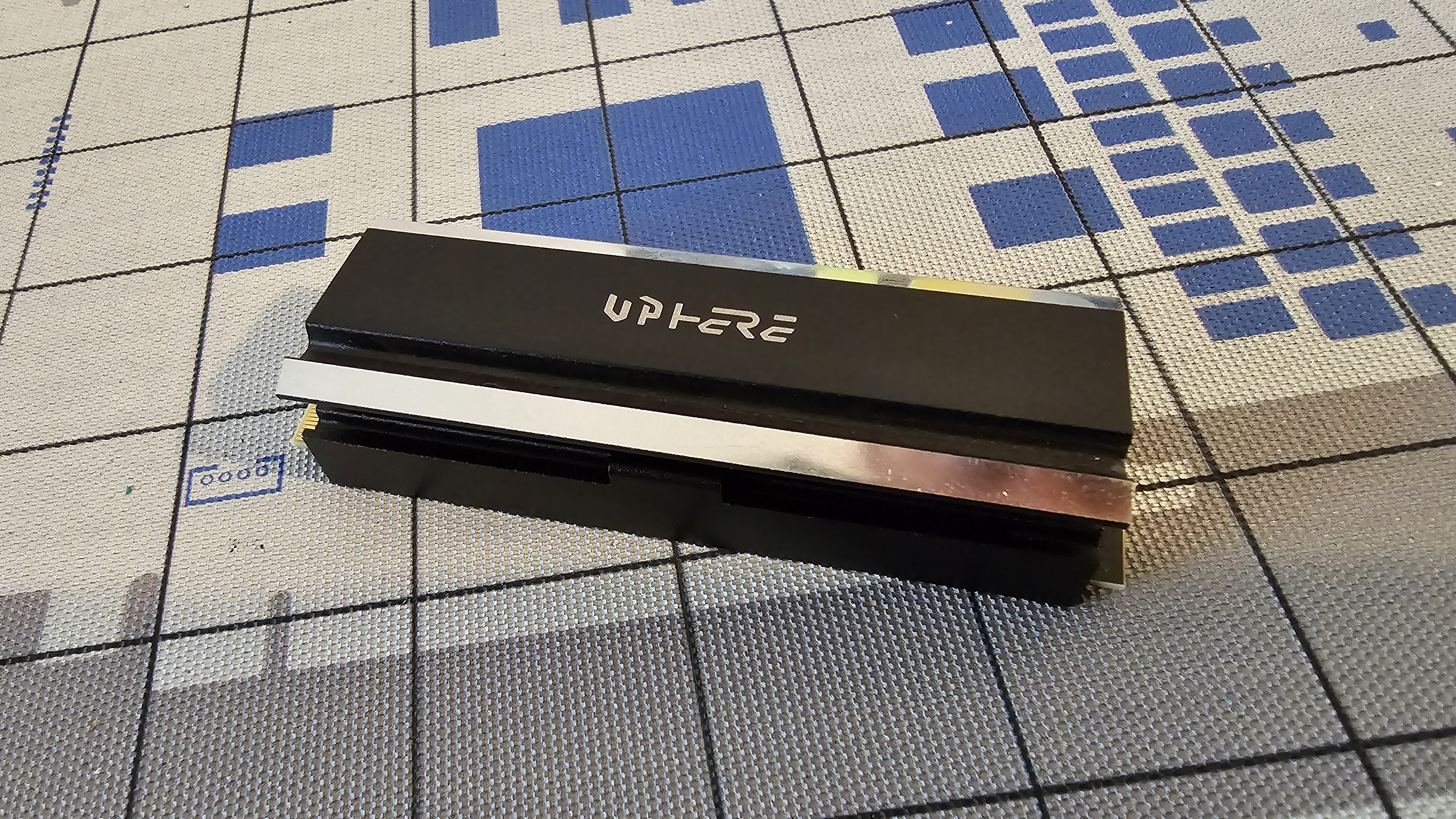Why you may trust Tom’s HardwareOur expert reviewers spend hours testing and comparing products and services so you can choose the best for you.Find out more about how we test.
Benchmarks and Conclusion
Thermal Performance
If you look at the temperatures on the chart alone, the results will be a little misleading. When I’ve tested SSD heatsinks on this platform, I’ve always used a 360mm AIO for consistency. When paired with an AIO, the SSD does reach its peak temperature during stress testing.
You’ll notice that while the graph below shows that the SSD reached its peak temperature of 82C while paired with an AIO, it is listed above the throttling point for PCIe 4 systems. This is because while the SSD did run hot, it did not throttle – sustaining the maximum performance possible on this testing platform.

But this doesn’t quite tell the whole story, because these smaller types of NVMe heatsinks are designed to be used in conjunction with an air cooler. I tested this heatsink withThermalright’s Phantom Spirit 120 EVO, and with this pairing, UpHere’s M201 heatsink was able to keep the SSD under its peak temperature in my stress tests.
Due to this finding, I’ll be changing how I test heatsinks. While I will continue to test most SSD heatsinks with an AIO installed, most smaller units like UpHere’s M201 will be tested with an air cooler in future reviews.

Conclusion
UpHere’s M201 NVMe SSD Heatsink provides essential cooling performance sufficient for most users, and its small profile means that it doesn’t suffer from compatibility issues. Its installation could be a little easier, but that’s something we’re willing to overlook on a product that only costs $4.99 USD.
Current page:Benchmarks and Conclusion

Albert Thomas is a contributor for Tom’s Hardware, primarily covering CPU cooling reviews.
